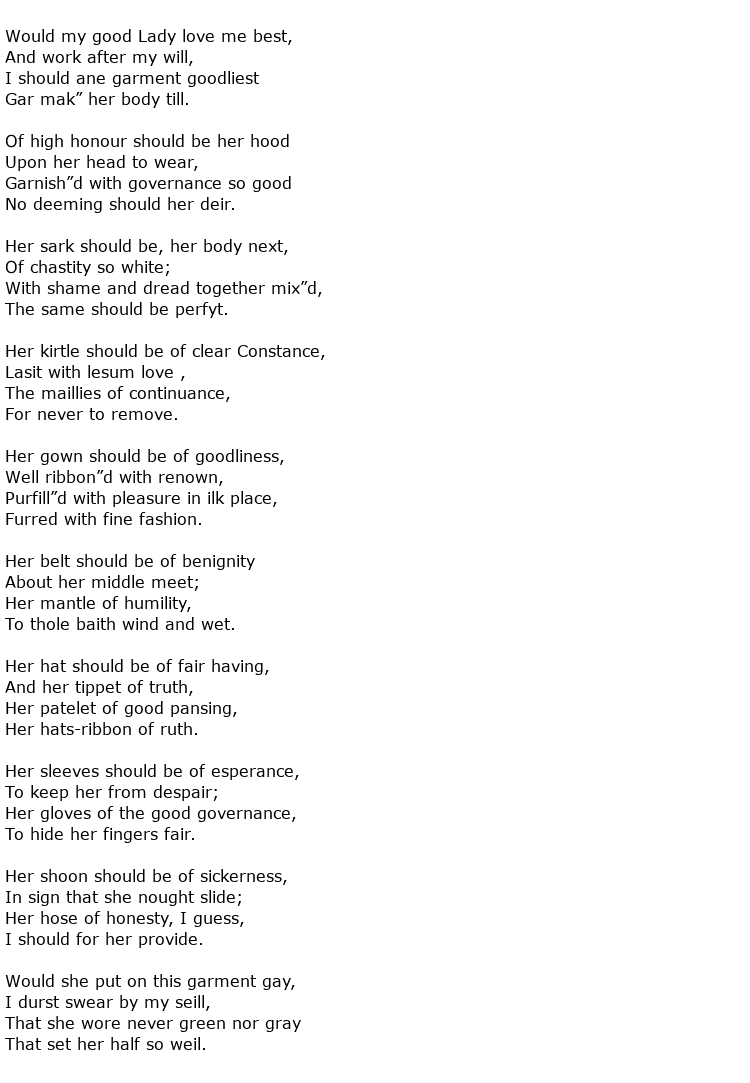 It is always hard to establish hard facts from speculation when discussing the lives of medieval poets and Robert Henryson is no exception. He was a late 15th century Scottish poet, sometimes described as one of the greatest medieval poets. He is listed among the so-called “Makars” who wrote in the Middle Scots language at the time of the northern renaissance. This language was being used alongside, and sometimes instead of, Latin and marked a transition from the medieval period to the more subtle sensibilities of the new renaissance in arts and literature. Some of his work survives and amounts to some 5,000 lines of mostly narrative verse. His major work was an epic retelling of an old Aesop’s fable which he called Morall Fabillis of Esope the Phrygian.
It is always hard to establish hard facts from speculation when discussing the lives of medieval poets and Robert Henryson is no exception. He was a late 15th century Scottish poet, sometimes described as one of the greatest medieval poets. He is listed among the so-called “Makars” who wrote in the Middle Scots language at the time of the northern renaissance. This language was being used alongside, and sometimes instead of, Latin and marked a transition from the medieval period to the more subtle sensibilities of the new renaissance in arts and literature. Some of his work survives and amounts to some 5,000 lines of mostly narrative verse. His major work was an epic retelling of an old Aesop’s fable which he called Morall Fabillis of Esope the Phrygian.
The Scottish town of Dunfermline features prominently in accounts of his life and he may have been born there around the year 1460 but this cannot be confirmed. There is some evidence that he received a good education and acquired some qualifications in the law and humanities and was closely connected with Dunfermline Abbey. The monks there may have educated him in Latin but as he began his writing it was in the newly recognised Scottish state language of Middle Scots. Literary historians have put the work of Robert Henryson amongst the most important of early Scottish literature.
It is believed that he was an active poet at the time of the reigns of the Scottish kings James III and James IV but there is no hard evidence to suggest that he was part of their royal court entourages though both kings were known to favour literature and the arts. He was, essentially, a story teller and was able to mix serious life issues with light hearted humour wherever it was needed. He was never afraid to question the rule of the church while remaining respectful of its status, as seen in Morall Fabillis. This was a huge piece of work, running to thirteen separate fable stories and some 3,000 lines of verse. While often exploring didactic themes Henryson was keen to introduce other European literary elements such as the narrative scepticism used by Geoffrey Chaucer and the historical candour seen in the work of John Barbour, another Scottish writer from the previous century.
His second major work was Testament of Cresseid which had tragic overtones throughout featuring one of Chaucer’s own characters and exploring moral and psychological subtlety. His shorter pieces focused more on day-to-day issues such as love and relationships, the practice of trading insults known as “flyting”, aimed specifically at the dubious medical practices of that time. He also wrote about the “pest” with the whole of Europe suffering outbreaks of the plague at this time.
It seems he even liked to advise ladies on good fashion sense, as evidenced in the following poem The Garment of Good Ladies:

It is thought that Henryson may have been a teacher in Dunfermline at a time when it was hard for the poor to receive any kind of education. There is evidence of a confirmatio, dated 1468, which suggests that buildings were provided for both a priest/teacher to live in and for scholars to be taught, including provision for poor scholars to be taught free of charge.
Various historians have suggested that Robert Henryson died in Dunfermline around the time of 1498 or 1499. The plague could have claimed his life. “Flux”, or dysentery, are also possible causes of death. It seems that he didn’t live beyond the age of 40.

